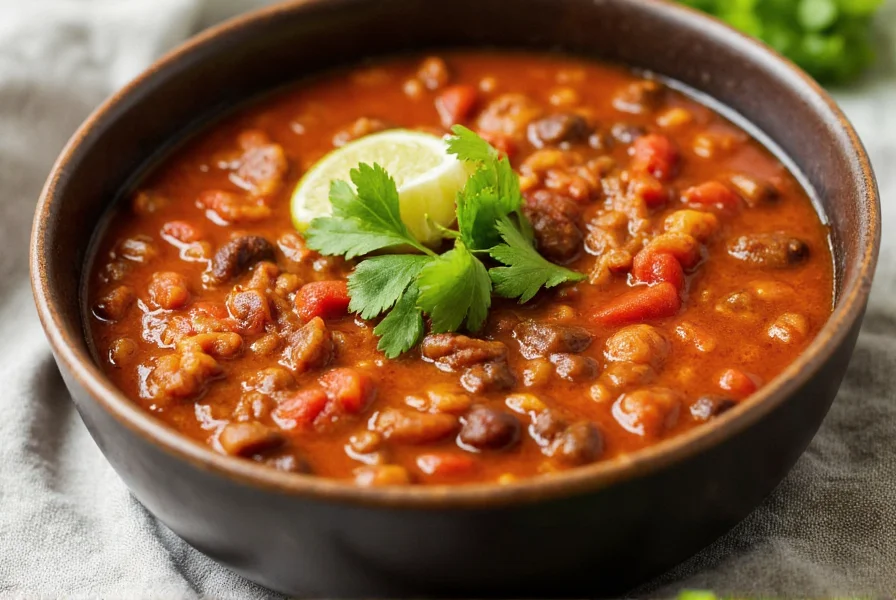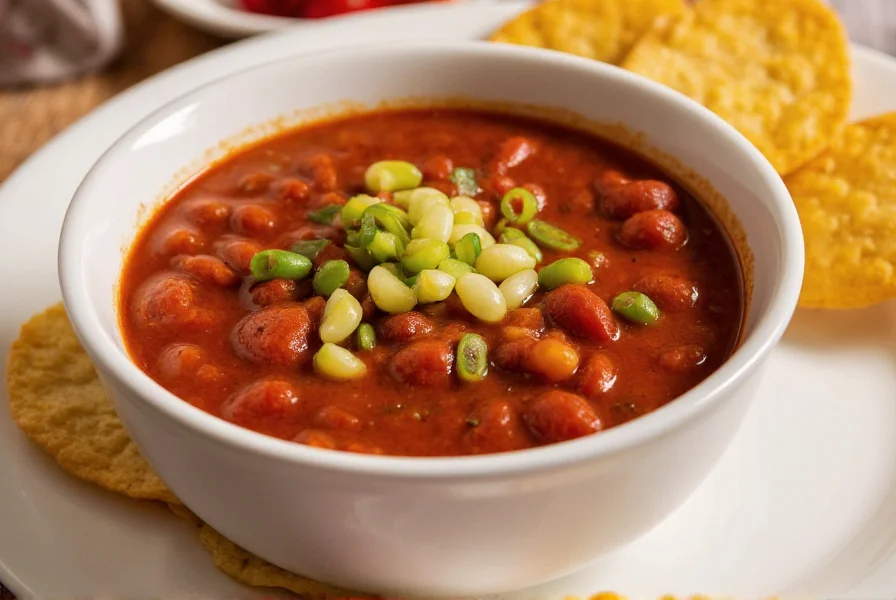Creating delicious low sodium chili doesn't mean sacrificing taste. With the right techniques and ingredients, you can enjoy a hearty, flavorful meal that supports your health goals. This guide provides practical strategies backed by culinary science to reduce sodium while enhancing natural flavors.
Why Choose Low Sodium Chili?
Traditional chili recipes often contain 800-1,200mg of sodium per serving—more than half the American Heart Association's recommended daily limit. High sodium intake correlates with increased blood pressure, making low sodium chili recipes essential for those managing hypertension, heart conditions, or kidney disease. The good news? Reducing sodium actually allows your taste buds to appreciate more nuanced flavors in ingredients.
Science-Backed Sodium Reduction Techniques
Professional chefs and nutritionists use specific methods to maintain flavor while cutting sodium. These approaches work with your taste physiology rather than against it:
| Traditional Ingredient | Low Sodium Alternative | Sodium Reduction |
|---|---|---|
| Regular canned tomatoes (14.5oz) | No-salt-added canned tomatoes | 300-400mg less per can |
| Regular beef broth (1 cup) | Homemade bone broth or no-sodium broth | 700-800mg less per cup |
| Canned beans (15oz) | Dry beans cooked from scratch | 400-500mg less per can |
| Regular chili seasoning | Homemade spice blend | 500-700mg less per tablespoon |
Building Flavor Without Salt
The secret to exceptional low sodium chili lies in layering flavors through these professional techniques:
Acidity Balance
Add 1-2 tablespoons of apple cider vinegar or fresh lime juice during the last 15 minutes of cooking. Acids stimulate taste receptors similarly to salt, creating perceived 'savoriness' without sodium. This technique works particularly well with low sodium chili for hypertension management.
Umami Enhancement
Incorporate naturally umami-rich ingredients:
- Diced mushrooms (portobello or shiitake)
- Sun-dried tomatoes (no salt added)
- Tomato paste (sautéed before adding liquids)
- Nutritional yeast (1-2 tablespoons)
Spice Layering Method
Create a homemade spice blend using:
- 2 tbsp chili powder (check for no added salt)
- 1 tbsp cumin
- 1½ tsp smoked paprika
- 1 tsp garlic powder
- ½ tsp onion powder
- ¼ tsp cayenne (optional)
Complete Low Sodium Chili Recipe
Makes 6 servings (approximately 120mg sodium per serving)
Ingredients
- 1 lb lean ground turkey or plant-based crumbles
- 1 large onion, diced
- 1 bell pepper, diced
- 3 cloves garlic, minced
- 2 (14.5 oz) cans no-salt-added diced tomatoes
- 1 (6 oz) can no-salt-added tomato paste
- 1½ cups cooked kidney beans (from dry)
- 1 cup homemade bone broth or no-sodium vegetable broth
- 2 tbsp apple cider vinegar
- Your homemade spice blend (recipe above)
- 1 cup fresh corn kernels
- 1 jalapeño, seeded and minced (optional)
Instructions
- Sauté onions, bell pepper, and garlic in 1 tbsp olive oil until softened (5-7 minutes)
- Add ground turkey and cook until browned
- Stir in tomato paste and cook for 2 minutes to deepen flavor
- Add spices and toast for 1 minute until fragrant
- Pour in tomatoes, broth, beans, corn, and jalapeño
- Simmer covered for 30 minutes, stirring occasionally
- Remove lid and simmer 15 more minutes to thicken
- Stir in apple cider vinegar just before serving
Cooking Mistakes That Sabotage Low Sodium Flavor
Avoid these common errors when preparing heart healthy chili without salt:
- Adding acid too early - Vinegar or citrus added at the beginning cooks off; add during the last 15 minutes
- Over-relying on salt substitutes - Many contain potassium which can be problematic for kidney patients
- Skipping the spice-toasting step - Raw spices taste dusty; toasting releases essential oils
- Using pre-made 'low sodium' products indiscriminately - Some still contain 100-200mg sodium per serving
Storage and Reheating for Maximum Flavor
Low sodium chili often tastes better the next day as flavors meld. Store in airtight containers:
- Refrigerator: Up to 4 days
- Freezer: Up to 3 months (portion in single servings)
When reheating, add a splash of broth or water since low sodium versions can thicken more than traditional chili. Finish with fresh herbs or a squeeze of lime to brighten flavors that may have mellowed during storage—essential for maintaining taste in your healthy chili recipe with reduced sodium.

Customizing for Specific Dietary Needs
This base recipe adapts well to various health requirements:
- For diabetes management: Add 1 cup diced zucchini and reduce beans to 1 cup
- For kidney health: Use white beans instead of kidney beans and omit tomatoes
- For maximum protein: Add ½ cup textured vegetable protein during the last 10 minutes
- For autoimmune protocols: Replace nightshades with butternut squash and use caraway instead of chili spices
Frequently Asked Questions
How can I make chili flavorful without using salt?
Layer flavors using acid (vinegar or citrus added at the end), umami boosters (mushrooms, tomato paste), toasted spices, and fresh herbs. The key is building complexity through multiple flavor dimensions rather than relying on salt's singular effect.
What's the sodium content in homemade low sodium chili compared to restaurant versions?
Homemade low sodium chili typically contains 100-150mg sodium per serving, while restaurant chili averages 800-1,200mg. Even 'healthy' restaurant options often contain 500-700mg per serving due to processed ingredients and seasoning blends.
Can I use salt substitutes in low sodium chili?
Most salt substitutes contain potassium chloride, which can be problematic for people with kidney conditions. It's better to enhance natural flavors through cooking techniques rather than substitutes. If needed, use small amounts of potassium-rich ingredients like mushrooms or tomatoes instead.
How do I adjust a regular chili recipe to make it low sodium?
Start with no-salt-added canned goods, cook beans from dry instead of canned, make your own spice blend, and replace broth with homemade versions. For every 1 tsp of regular chili powder, use 1 tbsp of your homemade blend. Add acid at the end and allow extra simmering time for flavors to develop.
Does low sodium chili need longer cooking time?
Yes, low sodium versions benefit from 10-15 minutes of additional simmering after other ingredients are cooked. This allows flavors to meld and develop complexity that salt would normally provide instantly. The extended cooking time is crucial for creating a satisfying low sodium chili recipe for hypertension management.











 浙公网安备
33010002000092号
浙公网安备
33010002000092号 浙B2-20120091-4
浙B2-20120091-4